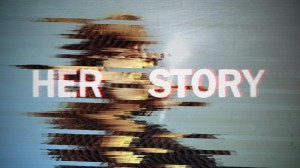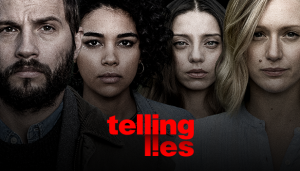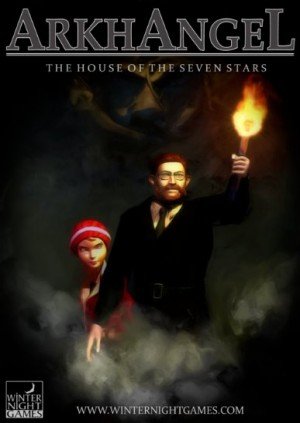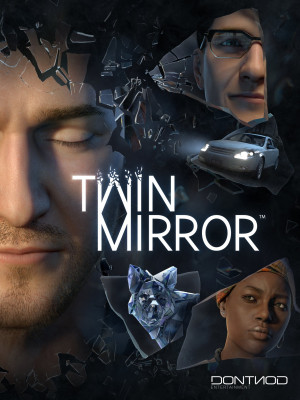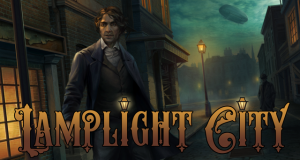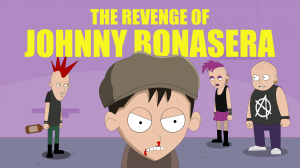Sam Barlow (Her Story, Telling Lies) – Part 1 interview - page 2
Sam: I remember even with Her Story, there was an early version where I wasn’t even sure if there was going to be an ending. And I showed it to some other developers and everyone was very angry at me for the idea of not having an ending. [laughs] And the argument wasn’t even that they wanted the kind of catharsis of an ending as much, more that they needed to know when they could move on, right? Especially in a structure like this, where there may be bigger questions or twists there. So the logic in Her Story was getting you into a position where the game is saying “hey, if you’re cool to go away, you can do. If you wanna walk away, trigger the credits, get the ending, get this extra little explanation, you can do that, and you can put the game on the shelf and you can go on with your life and have had a whole experience and not be left with lingering questions. But if you want to keep digging, go for it.”
There’s definitely a few tweaks to how things get wrapped up and there are some slightly unique bits that you can see depending on how you’ve played Telling Lies. But the thing that surprised me when we were testing this one was the length of the game. I wanted it to be more generous, and I wanted it to feel like there was more stuff so you weren’t as obsessive, but still, I like games that are 2/3/4 hours long that you can finish in one long sitting, and so in my head that was what this game was. But then when we ended up putting it all together and shot all the video, I was like, “shit. [laughs] This is actually pretty big!"
 |
Sam previously worked on Silent Hill: Shattered Memories, the most adventure-like installment in the acclaimed survival horror series |
When I was making proper video games, if you’re making a ten-hour game you know that’s actually a five-hour game with five hours of filler content. When we were making Silent Hill games, the producers would always remind us that we might only have two hours of content, but people are gonna get lost for two hours because they missed a key somewhere or they got lost. That was just a given; that was a production efficiency on making a classic Silent Hill game. And so when we made Shattered Memories and said “oh, we’re not gonna have that stuff”, they were horrified. “Where are you gonna get your two hours of wandering around that’s gonna make this feel like a properly timed video game?”
In a few interviews I’ve named [The Legend of] Zelda: Breath of the Wild as a game that I feel kinship with. I’m not saying this is a 100-hour game. Often if I play an open world game I feel like it’s more work than it is fun, and I feel like the state of the world is there to make me trudge over there to get five things to trudge back here. Whereas, playing Zelda I felt like this is such a rich and generous world; I’m walking along and see something that looks beautiful over that hill, and I walk over there and it is interesting, it is beautiful, and it feels handmade. And it feels like they just built this world and filled it with an abundance of stuff. But I was never really being forced to do stuff. Even in a lot of the side quests and things, go do them if you want to, but no one is forcing you to.
Ingmar: That’s a really good thing. Pretty much the opposite of something like, let's say, the latest Assassin’s Creed, for example, where you do loads of generic side quests so you can level up your character to be ready for the next main mission, but in the meantime you have nearly forgotten about the main story. That can be very, very frustrating.
 |
Although much different experiences, Barlow's games share a kinship with the organic open-world exploration of The Legend of Zelda: Breath of the Wild |
Sam: Yeah. I’m not comparing myself with Nintendo, but when you play a game like Zelda, you don’t worry that you’re gonna miss something. You don’t feel that sense of it being work. It was always like “ooh! There’s another thing over there I want to go and see”, and you feel like you can trust in the game that if I wander off this path and go over there, I will enjoy myself and I’m not penalised. It felt like when they were saying you can go in any direction and do what you want, it actually was meaningful.
With Telling Lies I think the analogy works, but as much as the job here is exploring video rather than exploring the world, it’s very much saying “here is a ton of video and you’re gonna look through it and explore it and you will see something that is interesting to you and use that as a jumping off point.” And on the scale of mechanical tweaks, I guess on paper this is a subtle tweak, but quite a big one in terms of how the game plays: In Her Story you were discovering these very small clips, individual lines or answers that this character gave. The way Telling Lies works is the files you’re discovering are entire conversations, so if Logan’s character is talking to Kerry’s character for seven minutes, there will be seven minutes of video.
Now the two interesting things are: as with Her Story the perspectives on the conversation are split. So you will have a video that is Logan’s side of the conversation and you’ll have a video that is Kerry’s side of the conversation. And so instantly you get some of the stuff you had in Her Story where you’re inferring what the other person has said. So somebody’s answering a question and through the rhetorical language you might infer what the question was. This is because we have the entire conversation here, so you might be watching Kerry listening to what Logan’s saying and you don’t know what that is, but you’re looking at her face and you’re seeing how she’s reacting and now you get to really dig into that. And on one hand you know you’re really drawing from the performance and the subtext of what’s happening here, and on the other hand it puts you in the perspective of the other side of the conversation. So you have this very different texture.
So what happens is, if you search for a word you will get dropped into the clip at the point where the word is spoken. So very early on, search for “love” and you’ll get dropped into a scene in which Kerry’s character says “love you!” and hangs up. And from there you can then scrub backwards and discover what scene preceded this, the whole conversation. And we heavily emphasise this use of scrubbing through the video, almost in a way that is analogous to walking, running, riding, exploring in an open world game. And we have a very tactile, analogue scrub, so you’re scrubbing forwards or backwards like in an old editing suite. It’s a very hands-on way of exploring the video because we have subtitles. What you often find yourself doing is watching a scene backwards, and you know oftentimes that what is happening at the start of the scene, middle of the scene, end of the scene can shift dramatically. You’ve been dropped into a scene that’s very intense and you rewind to discover “how the hell did we get here?”
Continued on the next page...



